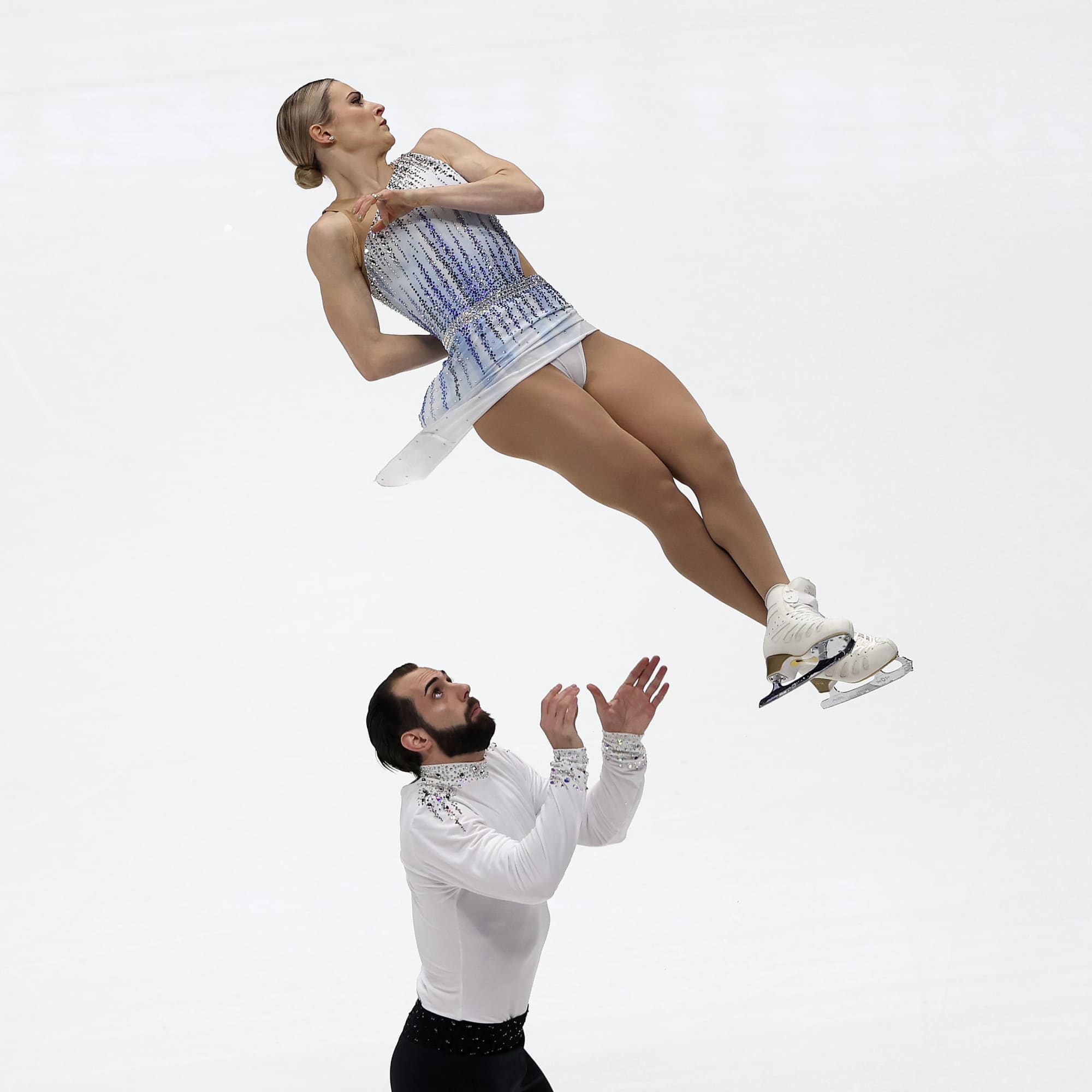
- POPSUGAR Australia
- Fitness
- How to Tell the Difference Between Ice Dancing and Pairs Figure Skating
How to Tell the Difference Between Ice Dancing and Pairs Figure Skating

Image Source: Getty / Matthew Stockman
When you tune in to watch figure skating at the 2022 Winter Olympics, you’ll find two distinct paired disciplines: ice dancing and pairs figure skating. What’s the difference between the two? They might look similar on the surface, but besides the fact that they both require two skaters to be on the ice, they’re actually quite different. Ahead, we break down the differences between ice dance and pairs and give you a preview of the US teams competing in Beijing.
What Is Ice Dancing?
Ice dance is a paired figure skating discipline in which the partners perform their elements with an eye to the rhythm and beat of their accompanying music. You can also think of ice dance as the one where they don’t jump. Unlike other figure skating disciplines – which have athletes perform skills like triple axels and quad flips – ice dance doesn’t require jump elements.
In some ways, ice dance is one of the narrowest disciplines to judge: its elements tend to focus more on precision and tiny details, which can result in mere fractions of a point separating teams. Ice dancers have two required programs: the rhythm dance and the free dance. In the rhythm dance, all teams must perform a program that includes a required “pattern dance” (a series of steps patterned on a particular dance style) and that maintains the theme and character of the style throughout. For the Olympic season, the required pattern is the “Midnight Blues,” with programs incorporating blues, jazz, hip-hop, and related styles. The free dance is almost twice as long and has no specific style requirements.
In both programs, skaters are judged on several required elements, including complicated footwork sequences and spins, along with the hallmark elements of the discipline: lifts and twizzles. Twizzles are a series of one-footed spins executed sequentially, in unison, and often with complex arm movements, making them incredibly difficult for even the most elite skaters. For the lifts, the lifting partner is forbidden from having their arms fully extended overhead for more than a brief moment while in motion. As a result, ice-dance lifts tend to involve a lot of creative and acrobatic positions, as well as unique entrances and exits, which can help garner more points.
What Is Pairs Figure Skating?
Pairs skating is very similar to men’s and women’s singles skating, but with a few paired elements thrown in and all the skills done in tandem. Both athletes execute elements like jumps and spins side by side, along with partnered moves like twists, throws, and lifts. Like the other figure skating disciplines, pairs skate both a short program and a free skate.
You’ll immediately recognise the flashiest elements of pairs skating. Twists involve a lifting partner literally throwing their partner into the air, where they rapidly spin (or “twist”) parallel to the ice before landing back in their partner’s arms. Most elite pairs perform a triple twist, with three rotations; a select few attempt a quad. Pairs programs also require both side-by-side jumps, where the partners attempt to execute the same jumps in unison, and throw jumps, in which the lifting partner assists on takeoff by “throwing” their partner into a large jump. You may also see death spirals, which has one partner supporting the other as they spin while lying almost parallel to the ice. Although they look scary, death spirals are actually one of the easier pairs elements to execute.
And, of course, there are the lifts. Unlike in ice dance, pairs lifts require the lifting partner to fully extend their arms above their heads, sometimes balancing their partner with just one hand.
Who Will Represent the US in Pairs and Ice Dance at the Olympics?
The US delegation has qualified three ice-dance teams for the Beijing Olympics, while the pairs have qualified two teams. The ice-dance teams are Madison Chock and Evan Bates, Madison Hubbell and Zachary Donohue, and Kaitlin Hawayek and Jean-Luc Baker. Chock and Bates previously competed at both the 2014 and 2018 Olympics (and Bates competed in 2010 with a previous partner), and Hubbell and Donohue placed fourth at the 2018 Olympics. Both teams have won three national championships and an assortment of medals at the World Championships. This is Hawayek and Baker’s first Olympics, although they have won several international medals.
In pairs, the US will be represented by Ashley Cain-Gribble and Timothy LeDuc, as well as Alexa Knierim and Brandon Frazier. Knierim previously competed at the 2018 Olympics as the sole US pair team with husband and then-partner Chris Knierim, while the other three skaters are first-time Olympians. LeDuc will make history as the first openly nonbinary athlete to compete at the Winter Games.


